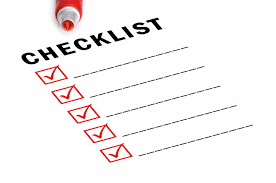From Paper to Practice: Compliance Policies That Work
April 03, 2025In the FDA-regulated industry, a compliance program isn’t just a formality—it’s a critical tool for protecting your business, patients, and reputation. Still, too many companies treat compliance policies as static documents—tucked away in a binder or on a shared drive.
However, a strong compliance program is much more than a set of policies. It’s a practical, working framework that informs daily decisions. People need to actually read these policies and look to them for guidance on processes and requirements. They shouldn’t be something you train on once a year and then forget about—they should be a consistent reference point for how things get done the right way.
Some companies take shortcuts—reusing policies from another business or downloading free templates online. The problem? Those documents are often too generic, outdated, or simply wrong. Regulators expect your policies to be tailored to your operations. Boilerplate language won’t hold up when it matters most.
At Gardner Law, we’ve developed a library of compliance policy templates designed specifically for FDA-regulated companies. More importantly, we work with our clients to customize these policies to reflect their unique business models, risk profiles, and operational realities.
Practical Ways to Strengthen Your Compliance Policies
If you're serious about making your compliance policies meaningful (and defensible), here are a few ways to bring them to life:

- Make them accessible. Store policies in a central, searchable system—not just a PDF in a shared folder.
- Assign ownership. Ensure every policy has a designated owner responsible for updates, questions, and training.
- Use real-world examples. Tie policies to field-based scenarios and FAQs to help employees understand how the rules apply.
- Reinforce throughout the year. Use quick reminders, team huddles, and micro-learning—not just annual “read and acknowledge” training.
- Keep them current. Review policies regularly and update them based on new regulations, business practices, or audit findings.
- Ensure alignment with operations. Policies should reflect how your team actually works—not how someone thinks it should work on paper.
- Track acknowledgment and understanding. Require employees to confirm they've read and understood key policies—especially in high-risk areas. Better yet, include short knowledge checks or quizzes to ensure the material sticks.
- Involve cross-functional teams. Legal, compliance, commercial, and HR should all weigh in to ensure relevance and buy-in.
If you're not sure where to begin, our Compliance Program Checklist is a helpful tool for assessing your current policies and identifying gaps.
Ready to refresh your compliance program or align your policies with how your company really operates? Reach out to the Gardner Law team—we’re here to help you move beyond the binder.